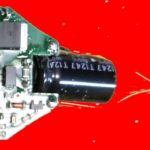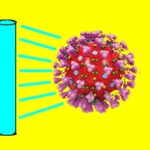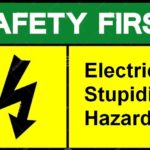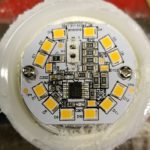A small, thin and flexible light cell, printed on recyclable plastic, has been optimized for the light spectrum found indoors. Designed by Epishine in Sweden, the light cells are designed to be used instead of batteries on wireless sensors and similar devices.
 The cells have a power density of 18 μW/cm2 and have a 1 cm bending radius on their longer side. Each cell includes low-resistance crimp contacts with soldering tabs. Company officials say the cells are compatible with reflow soldering processes.
The cells have a power density of 18 μW/cm2 and have a 1 cm bending radius on their longer side. Each cell includes low-resistance crimp contacts with soldering tabs. Company officials say the cells are compatible with reflow soldering processes.
 The cells are optimized for light levels characterizing indoors, from 50 lux for low-light situations up to about 1,000 lux for commercial settings such as supermarkets. These light levels produce a cell open-circuit voltage ranging from 3.4 to 4 V, a maximum output power of over 800 μW, and maximum short-circuit current of 300 μA. Standard cells are 0.2-mm thick and come in six standard sizes ranging from 20 to 50 mm square and contain six or eight cells. The modules are also semi-transparent.
The cells are optimized for light levels characterizing indoors, from 50 lux for low-light situations up to about 1,000 lux for commercial settings such as supermarkets. These light levels produce a cell open-circuit voltage ranging from 3.4 to 4 V, a maximum output power of over 800 μW, and maximum short-circuit current of 300 μA. Standard cells are 0.2-mm thick and come in six standard sizes ranging from 20 to 50 mm square and contain six or eight cells. The modules are also semi-transparent.
The company also produces an evaluation kit designed to show how the Light Energy Harvesting (LEH) modules can power indoor wireless low-power devices normally powered by batteries. It combines Epishine LEH modules with a supercapacitor as an energy buffer and intelligent charging management to support various output voltages and energy storage solutions. It can also use an external primary battery as a backup. Company officials say the evaluation kit can deliver sufficient output current to power most low-power radios such as BLE, Zigbee, LoRa and similar protocols.
The Epishine cells are already used in a few applications as a means to eliminate the need for batteries. Uses so far include the powering of smart cards that, as a security feature, shut off when in a wallet or purse but switch on when exposed to room light; in hotel electronic locks as a means of eliminating batteries and their maintenance; and in smoke/fire detectors that needn’t be periodically taken out of service for a battery change.
Epishine, Westmansgatan 47, 582 16 Linköping, Sweden, https://www.epishine.com/






Leave a Reply